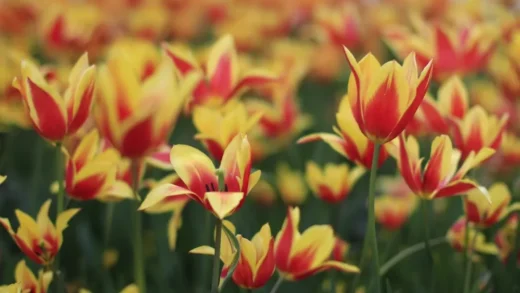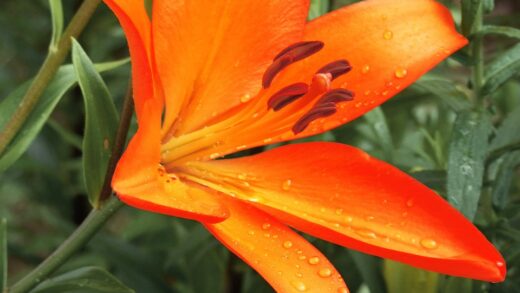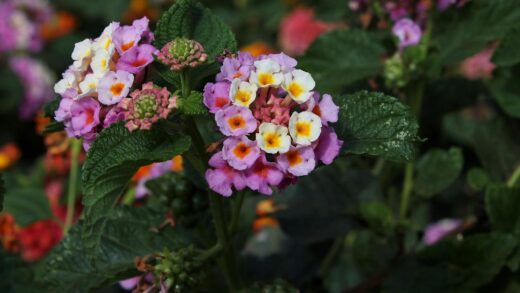Providing the sleeping hibiscus with the appropriate nutrients is a cornerstone of its cultivation, essential for promoting vigorous growth, lush foliage, and a profusion of its uniquely beautiful, pendulous flowers. Much like any living organism, this plant requires a balanced diet to thrive, and it is the gardener’s role to supply these essential elements in the right proportions and at the right times. Fertilization is not simply about making the plant bigger; it is about nourishing it from within, supporting its complex metabolic processes, and giving it the strength to flourish and fend off potential stressors. A well-fed sleeping hibiscus is a picture of health, with deep green leaves and a continuous display of its crimson, teardrop-like blooms.
The nutritional needs of the sleeping hibiscus are most pronounced during its active growing season in the spring and summer. This is when the plant is investing a tremendous amount of energy into producing new stems, leaves, and, most importantly, flowers. A consistent supply of key nutrients during this period is critical. The primary macronutrients required are Nitrogen (N), which promotes healthy leaf growth; Phosphorus (P), essential for root development and flowering; and Potassium (K), which contributes to overall plant vigor and disease resistance. A balanced fertilizer that provides these three elements in good proportion is the foundation of a solid feeding regimen.
However, the plant’s appetite is not constant throughout the year. As the days shorten and temperatures cool in autumn and winter, the plant’s growth slows, and it enters a period of rest. During this semi-dormant phase, its nutritional requirements decrease dramatically. Continuing to fertilize at the same rate as in the summer would be detrimental, as the unused nutrients would accumulate in the soil as salts, which can burn the roots and create a toxic environment. Therefore, a key aspect of proper fertilization is understanding when to feed the plant and, just as importantly, when to stop.
Beyond the primary macronutrients, the sleeping hibiscus also benefits from a range of micronutrients, such as iron, magnesium, and manganese. These are required in much smaller quantities but are no less vital for the plant’s health. A deficiency in any of these micronutrients can lead to specific symptoms, such as chlorosis (yellowing leaves with green veins), which can detract from the plant’s ornamental value. Using a high-quality, complete fertilizer designed for flowering tropical plants will typically ensure that these essential trace elements are also being supplied, leading to a truly healthy and vibrant specimen.
Understanding fertilizer components
To effectively fertilize your sleeping hibiscus, it is important to understand the basics of what is in the fertilizer bag or bottle. Fertilizers are labeled with three numbers, known as the N-P-K ratio, which represents the percentage of Nitrogen (N), Phosphorus (P), and Potassium (K) by weight. For example, a 10-10-10 fertilizer contains 10% nitrogen, 10% phosphorus, and 10% potassium. Nitrogen is the primary driver of vegetative growth, responsible for the vibrant green color of the leaves. A plant that is deficient in nitrogen will often have pale, yellowish leaves and stunted growth.
More articles on this topic
Phosphorus plays a crucial role in energy transfer within the plant and is particularly vital for strong root development and the production of flowers and fruits. For a flowering shrub like the sleeping hibiscus, an adequate supply of phosphorus is essential for a prolific blooming season. While a balanced fertilizer is generally best, some “bloom booster” formulas will have a higher middle number (P) to specifically encourage flowering. However, these should be used with caution, as an excess of phosphorus can inhibit the uptake of other important nutrients.
Potassium is the third key macronutrient, and its role is more about the overall health and regulation of the plant’s internal systems. It helps to regulate water movement within the plant, strengthens cell walls, and increases its resistance to environmental stresses such as drought, pests, and diseases. A plant with sufficient potassium will be more robust, resilient, and better able to withstand the rigors of its environment. Think of potassium as the nutrient that contributes to the plant’s general hardiness and well-being.
In addition to N, P, and K, complete fertilizers will also contain essential micronutrients, sometimes called trace elements. These include iron, manganese, zinc, copper, and boron. Although needed in very small amounts, they are critical for various enzymatic and metabolic functions. Iron deficiency, for instance, is a common issue that causes interveinal chlorosis, where the leaves turn yellow but the veins remain green. Using a fertilizer that includes these micronutrients helps to prevent such deficiencies and ensures the plant has all the building blocks it needs for optimal health.
Choosing the right fertilizer
When selecting a fertilizer for your sleeping hibiscus, you have several options, each with its own advantages. Water-soluble or liquid fertilizers are a popular and effective choice. They are mixed with water and applied during regular watering, providing a quick-acting source of nutrients that are immediately available to the plant’s roots. This allows for a great deal of control over the feeding schedule. For the sleeping hibiscus, a balanced liquid fertilizer, such as a 20-20-20 or 10-10-10 formulation, diluted to half the recommended strength, is an excellent choice for regular application during the growing season.
More articles on this topic
Slow-release granular fertilizers offer a more hands-off approach. These are formulated as coated pellets that you mix into the top layer of the soil or apply to the surface. With each watering, a small amount of the coating dissolves, releasing a little bit of fertilizer over an extended period, typically three to six months. This method provides a steady, consistent supply of nutrients and reduces the risk of over-fertilization. It is a convenient option, especially for plants grown outdoors in the ground, as a single application in the spring can provide for the plant’s needs for much of the growing season.
Organic fertilizers are another excellent option and work to improve the soil while feeding the plant. Materials like fish emulsion, compost tea, or worm castings provide a gentle, slow-release source of nutrients. They also enrich the soil with organic matter, which improves its structure, water retention, and encourages a healthy population of beneficial soil microbes. These microbes play a vital role in breaking down organic matter and making nutrients more available to the plant’s roots. You can use organic fertilizers on their own or in conjunction with conventional fertilizers for a well-rounded approach.
Regardless of the type you choose, it is important to select a “complete” fertilizer that contains micronutrients. Many tropical plants, including the sleeping hibiscus, are prone to deficiencies in elements like iron and magnesium. A good quality fertilizer formulated for tropical or flowering plants will usually be supplemented with these essential trace elements. Reading the label carefully to ensure the product provides a full spectrum of nutrients will help you avoid common nutritional problems and keep your plant looking its best.
The fertilization schedule
The timing and frequency of fertilization are just as critical as the choice of fertilizer itself. The feeding schedule for a sleeping hibiscus should be closely aligned with its natural growth cycle. Begin fertilizing in the early spring, as soon as you notice the first signs of new growth. This is when the plant is “waking up” from its winter rest and will appreciate the nutritional boost to fuel the development of new leaves and shoots. This initial spring feeding sets the stage for a healthy and productive growing season.
Throughout the spring and summer, the plant’s nutritional needs are at their peak. This is the time for regular, consistent feeding. If you are using a water-soluble liquid fertilizer, a common and effective strategy is to apply it at half-strength every two to four weeks. This “weakly, weekly” (or bi-weekly) approach provides a constant, gentle supply of nutrients that the plant can readily use, without the shock of infrequent, heavy doses. If you have opted for a slow-release granular fertilizer, a single application in the spring according to the package directions should suffice for the entire season.
As autumn approaches and the days grow shorter and cooler, the plant’s growth will naturally begin to slow down. This is your cue to begin tapering off your fertilization routine. You can reduce the frequency of liquid feeding to once a month, and then stop altogether by mid-autumn. Continuing to feed the plant heavily into the autumn can encourage a flush of tender new growth that will be susceptible to damage from the first cold snaps. It is important to allow the plant to harden off and prepare for its winter dormancy.
During the winter months, you should stop fertilizing completely. The plant is in a resting phase and is not actively growing, so it cannot use the added nutrients. Applying fertilizer during this time is not only wasteful but can be harmful. The unused fertilizer salts will accumulate in the soil, which can damage the root system and cause problems when the plant begins to grow again in the spring. Resume your regular feeding schedule only when you see clear signs of new growth returning in the spring.
Recognizing nutrient deficiencies and excesses
Learning to interpret the visual cues your sleeping hibiscus provides is a valuable skill for managing its nutrition. A common sign of a nutrient deficiency is a change in leaf color. A general pale green or yellowish appearance across the entire plant, especially on older leaves, often points to a nitrogen deficiency. Since nitrogen is mobile within the plant, it will move it from older leaves to support new growth, causing the older foliage to yellow first. This is a clear sign that the plant needs a dose of balanced fertilizer.
Interveinal chlorosis, where the leaves turn yellow but the veins remain a distinct green, is a classic symptom of a micronutrient deficiency, most commonly iron or magnesium. This condition often appears on the newest growth first. It occurs because the plant lacks the necessary elements to produce chlorophyll, the pigment that makes leaves green. This issue is more common in soils with a high pH (alkaline), which can make iron less available to the plant. Applying a fertilizer that contains chelated iron and other micronutrients can usually correct this problem.
While less common, it is also possible to give your plant too much fertilizer, leading to nutrient excess or “fertilizer burn.” The symptoms can include brown, crispy leaf edges or tips, stunted growth, and the wilting of lower leaves. You may also see a white, crusty buildup of fertilizer salts on the surface of the soil or around the drainage holes of the pot. An excess of nutrients creates a saline environment in the soil, which can actually draw water out of the plant’s roots, causing them to dehydrate and burn.
If you suspect you have over-fertilized your plant, the best course of action is to flush the soil. Take the plant to a sink or an outdoor area and slowly pour a large volume of water through the pot, allowing it to drain freely. This will help to leach the excess fertilizer salts out of the soil. Allow the soil to dry out partially before watering again, and withhold any further fertilizer for at least a month to give the plant time to recover. Always remember that with fertilizer, it is much better to err on the side of giving too little than too much.


















